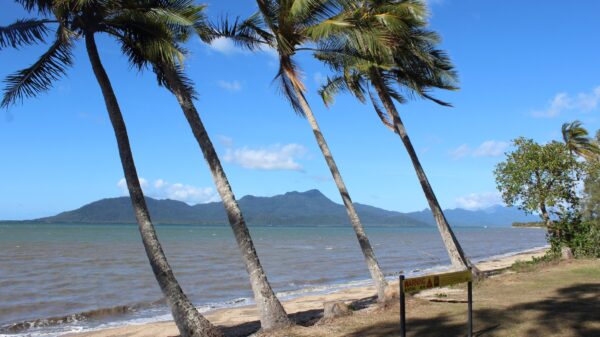Beach safety warning signs may need red flags and simpler English to save more foreign visitors on Australian beaches, a new study finds.
Nearly a third of all drowning victims in Australia last year were born overseas, a Royal Life Saving Australia report says; the UK and China are the most represented nationalities followed by India, Malaysia, Nepal and PNG.
WATCH THE VIDEO: Royal Life Saving Australia’s 2025 drowning report
In a new study from Monash University and Life Saving Victoria, South Koreans (who are Australia’s fifth largest group of international visitors) are also identified as among the largest group of overseas victims.
The study, led by drowning prevention researcher Dr Masaki Shibata, surveyed 163 students in South Korean universities about their understanding of how to act on Australian beaches and their understanding of beach safety signs.
The study says only 14% of those surveyed interpreted the red-and-yellow safety flags correctly.
Almost none of the survey participants understood warning terms such as ‘rip currents’ or ‘shore dump’; many thought ‘shore dump’ was a warning about dumped rubbish and only 7% fully understood what rip currents were.
BEACH SAFETY CONCERN
Dr Shibata says the lack of beach safety knowledge is a concern given the high drowning rates among South Korean visitors to Australia.
“These students see Australia as a beach destination where they can swim in the water but many have limited experience swimming in the ocean back home,” he says.
“When beach safety signs are misinterpreted or not understood, it puts their lives at risk.”
With mistranslation a problem, Dr Shibata says the focus for sign makers should shift from finding the best possible translation to finding more compatible terms in other languages.
“Our research shows that if the original English terms are vague or culturally unfamiliar, translations into other languages are likely to be confusing, too,” he says.
“Our study found that in Google Translate, ‘shore dump’ is translated as ‘coastal dump’ in Korean while ‘shore break’ is translated as ‘shore relaxation’.
“Improving the clarity of the English signs is a crucial first step toward creating translations that international visitors can understand,” Dr Shibata says.
“This is especially important now, as warmer weather brings more people to the beach and increases the risk of preventable drownings.”

FLAG COLOURS
The study also tested how sign colour affects behaviour.
When ‘beach closed’ signs featuring red and yellow backgrounds were shown to the students in South Korea, 80% of them identified the red colour as a high-level warning.
When a ‘dangerous current’ sign with a yellow background was shown with images of people in the water, nearly 50% of respondents said they would enter the water despite the warning.
With yellow the internationally recognised colour to indicate caution and is widely used on warning signs in Australia, this new research highlights the importance of reviewing how colour and design influence how people notice and respond to beach warning signs.
“Red is universally recognised as a warning colour. This research suggests that using red backgrounds for high-risk signage could be a more effective way to communicate danger to international beachgoers,” Dr Shibata said.
As Australia enters summer, Dr. Shibata says the study is a timely recommendation for authorities to consider how beach safety messages can be improved.
2025 DROWNING REPORT BULLET POINTS
357 drownings over the past 12 months, a 27% increase on the 10-year average.
Where the country of birth was known, 33% of the drowning victims (61) were born overseas.
The lowest rates of drowning were in the 5-14 years category but rose sharply by ages 15-24 years.
Drowning rates were above the 10-year average for every age group over 45 years.
One third (33%) of all drowning deaths were adults aged 65 and older (118).
The highest drowning rates were in people aged 75 years and older.
There were 154 deaths in coastal locations including 82 at beaches.
122 deaths were in inland waterways with 99 in rivers.
There were 35 deaths in swimming pools of which 68% were in backyard pools.
Drowning rates double for those from the most disadvantages areas and nearly triple for regional and remote residents compared to major cities.
Source: Royal Life Saving Australia
EARLIER STORY: Beach drownings on the rise as swimmers avoid patrolled areas






